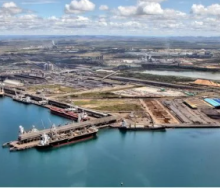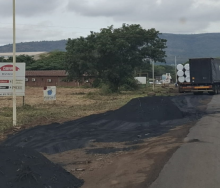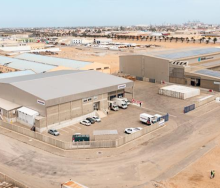The delivery of cold chain boxes into terminal stacks, shipping delays, bottlenecks and inconsistent supply, have made South Africa’s current fruit export season “incredibly challenging”, Citrus Growers’ Association CEO Justin Chadwick has said.
In his latest weekly brief, he emphasises that “these challenges were prevalent at all South African ports”.
Not all is doom and gloom, though.
According to Chadwick, “Specialised reefer shipping to Japan, China, the USA, and Russia remained generally consistent.”
Compounding matters on the growers’ side was a difficult season marked by challenging climate conditions.
Earlier this year, an official at MSC in Durban said: “We’re simply not seeing the volumes we were expecting.”
The source added that a major reason for the disappointing citrus exports was seasonal constraints, causing fruit to ripen later.
Chadwick stressed at that the time that later onset of winter delayed the colouring of fruit.
This week he said: “Production and export volume from the Northern Regions (Letsitele and the Lowveld) was significantly lower, marking the lowest production from this corridor in recent years.”
In addition, “The Durban container terminals faced a myriad of equipment challenges that affected ship turn-around times and caused truck delays when entering the terminals.”
Throughput issues at the port were also a bi-modal affair, with seaside problems exacerbated by Transnet’s truck booking system, “which prohibited booking slots and thus impacted the effective delivery of containers into the terminals,” said Chadwick.
Although low output is never a benefit, especially given South Africa’s growing status as the second-biggest citrus exporter in the world, Chadwick added: “On a positive note, it was fortunate that production and exports from the Northern Regions were low this season, given the extent of the challenges.
“Although export volumes were lower, there were occasions when plug capacity reached close to 100%.”
From a port performance perspective, he singled out Mozambique’s Port of Maputo, saying that despite poor production, the port exported about 14 600 pallets, mainly to the Middle East, Malaysia and Bangladesh.
The disruptive effect of persistent windy conditions on ports supporting fruit exports from the Eastern Cape’s Sundays River Valley, confirmed by weekly Cargo Movement Updates released by the South African Association of Freight Forwarders and Business Unity SA, also featured in Chadwick’s brief.
He said: “The Eastern Cape experienced the most logistics and shipping problems, primarily due to severe and persistent wind disruptions. These disruptions delayed ships, clogged reefer capacity and created a knock-on effect throughout the supply chain. Bottlenecks in this region were widespread throughout the season.”
Apart from tempestuous weather conditions, the container terminal in Gqeberha (Port Elizabeth) suffered severe capacity constraints, considering the volume of reefer cargo it was expected to ship out.
“The container terminal was utilised for three main Europe-bound services, as well as routes to the Middle East and North America, which continuously challenged the terminal's capacity to meet reefer throughput demands,” Chadwick said.
“It is also worth noting that exports from the Eastern Cape region increased by 20% this year, adding to the challenges.”
As for the Port of Cape Town, Chadwick said the port usually functioned well during the export season, due to surplus capacity and windy conditions that tended to abate during the winter months.
“However, uncharacteristic weather events did disrupt operations at the Cape Town container terminals on occasion. There was one instance where prolonged wind and rain disruptions caused a significant bottleneck in the region.”
Further impacting the port’s performance were persistent equipment failures by state-owned logistics utility, Transnet.













